2009 Volkswagen CC – Click above for high-res image gallery
Is "four-door coupe" an oxymoron or a clever twist on automotive design rules? That was a popular question among the 50 or so journalists invited to drive Volkswagen's new CC from Atlanta to Nashville last week.
The seemingly contradictory term was apparently first used to describe the Rover P5 Mark II in 1962, but was revived more recently when Mercedes introduced its CLS in 2004. In both cases the cars' low rooflines defied conventional saloon styling and needed a unique descriptor for marketing pizazz.
When rumors of the VW CC began to leak out, some speculated the CLS would be its main target. But Volkswagen learned from the disappointing U.S. acceptance of the Phaeton: Luxury buyers pay for brand cache as much as they do for supple leather and high-tech gadgets. This time around, says Brett Scott, VW's product planning manager, they expect many of their customers to be Camry and Accord shoppers attracted to the CC's stand-out styling.
All photos Copyright ©2008 Chris Tutor / Weblogs, Inc.
Those two cars are dead center in Volkswagen's sights. At the bottom of four trim levels, the CC Sport comes in at $26,790 with a 200-hp, turbocharged four-cylinder and a 6-speed manual. That's more than $6,000 above a base 2009 Accord sedan, and more than $7,600 than a base Camry. The two Japanese models can also seat one more passenger, and while the Camry is routinely knocked for being boring, the Accord's looks are at least memorable. Looking at pure numbers, it's hard to see how VW expects to woo 28,000 buyers away from Camry and Accord eacy year. But then, emotion usually trumps numbers in the car-buying decision making process.
And if you're wondering, CC stands for "comfort coupe."
The general consensus among journalists attending the ride and drive from Atlanta to Nashville was that the CC is an attractive car and a welcome divergence for VW design. The aggressive front fascia incorporates an updated take on the familiar VW grille, badge and headlights that curve into the fenders. Rectangular turn signals sit below the headlights and above subtle fog lamps recessed into the lower grille extensions.
The cut line for the hood becomes the top of the doors, which are accented by a prominent and design-defining character line. Chrome surrounds the frameless side glass and is also used as a lower door guard. Four different wheel styles are available, though they're all rather similar in design.
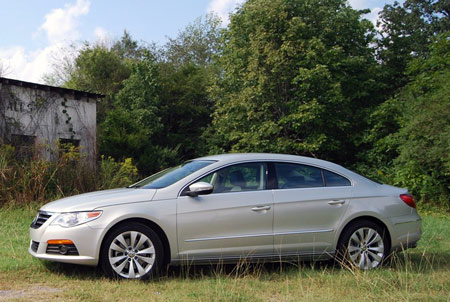
Complaints about the CC's exterior styling were rare during the event, but most focused on the car's rear. Thumbnail images of the car's back side could easily be mistaken for the Buick Lucerne or even the competing Camry. Sharp-eyed car fans can tell the 4-cylinder CCs from the upper level VR6 models by the exhaust pipe location. The smaller engined car has two outlets on the driver's side, while the VR6 wears a single pipe on each side of the car.
But Volkswagen must win over more than just the opinions of a bunch of journalists. What about the car-buying public? Will they accept what is basically an upgraded Passat with one fewer seat? We talked to several folks on the street and the results were mostly good.
Mike McDonald of Greenville, N.C. and a father of two stopped to take a look at the CC as we photographed it outside our Nashville hotel. "My question is, why don't (all Volkswagens) look like this?" he said after giving the car a good once over. But even if the car's looks draw curious shoppers into dealerships, the CC's interior will be the make or break issue.
VW says the frameless side windows should help ingress, but getting into the car for the first time, more than one journalist bumped his head on the roof. With practice we learned to bend just a bit further before settling into the bolstered seat.
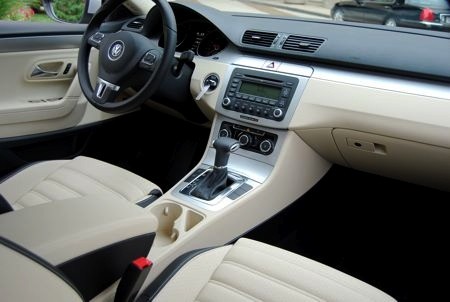
Our friend Mike had no trouble getting into the car, though. He thought the cream on black interior of our CC Sport was attractive and the quality seemed above that of Hondas and Toyotas he had seen recently. He was surprised to learn the seats on the Sport trim weren't actually leather, but instead Volkswagen's V-Tex upholstery. Mike currently drives a Prius but has been thinking of replacing it. But his emotional response to the CC's looks soon gave way to reality, though, as he contemplated the car's four-seat setup.
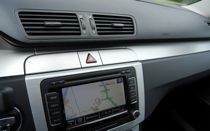
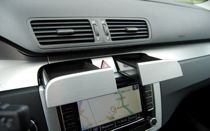
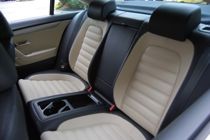
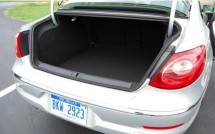
"We have two kids," Mike said from the rear seat, wondering how he and his wife could get two child seats and all the required gear in the car. A look at the CC's voluminous trunk, though, brought the spark back to Mike's eyes and the car seemed doable again. "Why would anyone pay more for a BMW?" Mike asked before heading to his hotel room.
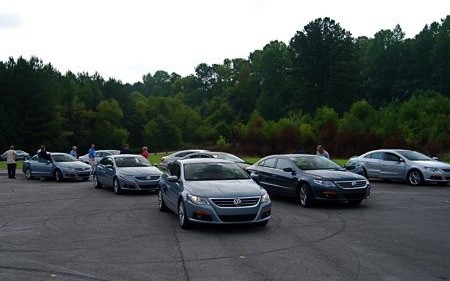
We had just finished a 250-mile drive that took us over Interstate highways and through twisty mountain roads. And we knew why BMW could charge more for their cars.
The CC's steering seemed heavy at slow speeds, and light but numb at highway speeds. Once out of Atlanta's choking traffic, our Sport trim CC's tires hummed noisily over a highway in need of resurfacing and the suspension gave an occasional bass-note boom over larger road flaws. The car's low-profile Continentals could be to blame for some of those noises.
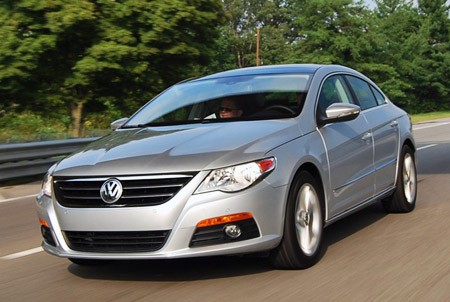
Wind noise was also louder than we liked in a car with luxury aspirations. The sunroof seemed to be the source for some of the problem, though, since another car we drove without the option was much quieter. In our opinion it's an easy fix, though. Since the sunroof only tilts open a small amount, the only reason to order it is if you want you car hotter on sunny days and you have a thing for the sound of rushing wind.
With our readers in mind, we risked our untarnished driving records with some noise-level tests. During sprints nearing 100 mph, the rushing wind was not much greater than at more legal speeds without the sunroof. We soon found cruise-control necessary to keep our speeds in check.
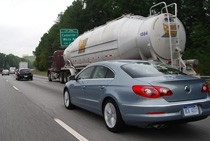
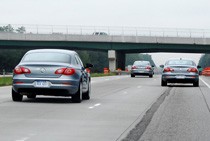
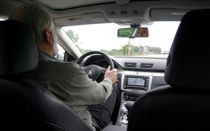
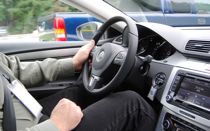
My 6'5" driving partner said he usually had trouble finding cars that fit him, but eventually manipulated the CC's power heated seat and telescoping wheel until he was comfortable. The sunroof reduced head room, but he still had a good inch before hitting the roof.
The back seat is a comfortable place to be. Leg room is ample and, surprisingly, so was head room despite the low roofline. The rear center armrest provides a place to park your Big Gulp and also leaves room for a pass-through to the trunk.
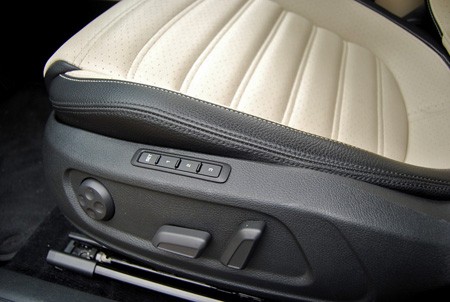
We drove both a leather-seated CC and one with V-Tex upholstery. The pleated, black leather seats were certainly pleasant to touch, but honestly difficult to discern from the perforated fake stuff. The all-black interior even seemed less opulent than the more visually pleasing, and cheaper, vinyl cabin.
VW takes the currently popular push-button start and reduces the process by a step. Push the key fob into the dash, push a little further, and the engine comes to life. We never quite got the hang of it. We were continually ejecting the key with too many pushes or turning on, then off, the engine. It will certainly take some getting used to.
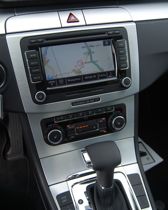
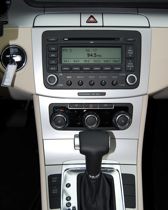
The CC's available navigation system is also different than VWs before it. Instead of being controlled solely with buttons and a knob, the nav now supports touch control. It's a very welcomed feature from VW. The unit offers traffic data and can also display maps in an easier to understand 3D mode.
And, supposedly, the CC's iPod integration is much refined. We tried connecting our iPhone to the USB cable hidden in the glove box, but got no response from the car's head unit. It's quite possible we weren't doing something right, but even some of the latest head units don't account for iPhones yet.
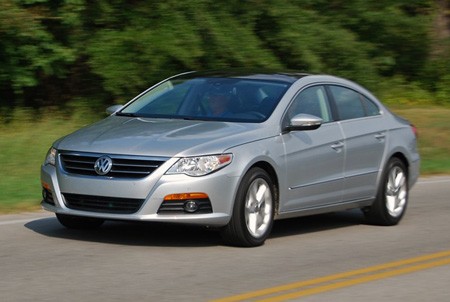
Acceleration from the turbo four was delivered with only slight hesitation and almost no hint of turbo lag. The exhaust note from a fully-pressed accelerator was much more aggressive than we expected from the usually quiet engine, and that's not a complaint. With the Tiptronic transmission in sport mode, we got to hear it even more often.
Volkswagen brought along only a few VR6 models and even fewer manual transmission-equipped CCs. Despite our best efforts we weren't able to get any seat time in them, but we're already trying to get one of each in the AB garage.
The car's disc brakes were nothing to celebrate or complain about. It had them. They worked time and again with no hint of fading after some spirited driving.
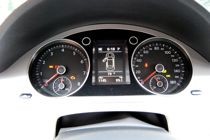
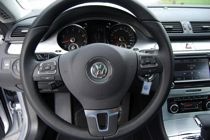
Over our two-state course, the CC's instrument panel told my lead-footed partner and I that we averaged 28 mpg. That is an amazing number considering our judicious use of sport mode, which prevents the transmission from shifting above fourth gear. EPA estimates the turbo four-cylinder to get 19 city / 29 highway mpg with the Tiptronic and 21/31 with the 6-speed manual. That's all the more impressive when you consider that VW claims the automatic-equipped four-cylinder will race to 60 mph in 6.9 seconds.
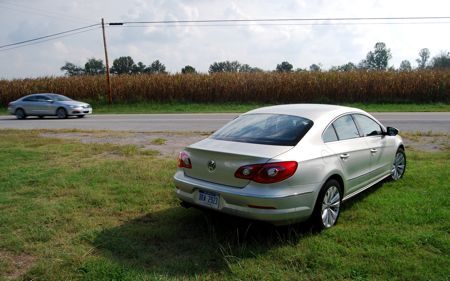
The 280-hp VR6 option is estimated to get 18 city / 27 highway and will get you only a .3 second advantage to 60 mph over the turbo four. Add 4motion and fuel economy drops to 17/25 with 60 mph coming up in 6.2 seconds.
Pricing for the turbo four model starts at $26,790 for the manual Sport trim and $27,890 with the Tiptronic transmission. Stepping up to the Luxury trim gets a long list of extras including rain-sensing wipers, a 12-way power driver's seat, leather and dual climate control, though it is only available with Tiptronic and starts at $31,990.
In addition to the larger engine, the VR6 Sport trim gets an upgraded sound system, 18-inch wheels and bi-xenon lights. That's gonna cost you $38,300, though. At the top of the line is the VR6 4motion. Choosing it will cost at least $39,300 and only adds the all-wheel drive system to the VR6 trim package.
Brett Scott, VW's product planning manager, told us they expect 70% of CC sales to be the 2.1-liter turbo model. We agree, since it gets the attractive styling without the extra cost of a lot of fancy options, as well as better fuel economy and a negligible difference in performance.
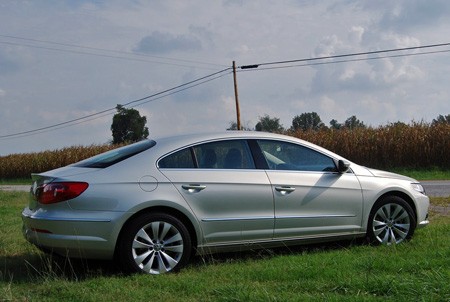
When asked why the company's DSG transmission isn't an option, VW reps would only say that the Tiptronic was sufficient for the engines available in the CC. We think Volkswagen fears cutting into Audi sales with the CC as it is, and adding DSG would only further erode Audi's market- and mindshare. Scott also said there are no plans to offer a diesel-powered CC.
The Volkswagen CC is expected on lots on October 18, with some dealers getting a few cars earlier. We're convinced it won't set any sales records, but it's an interesting take on the four-door family sedan that has few faults beyond its price tag. Sounds like a lot of other Volkswagens we know.
Photos Copyright ©2008 Chris Tutor / Weblogs, Inc.
Our travel and lodging for this media event was provided by the manufacturer.
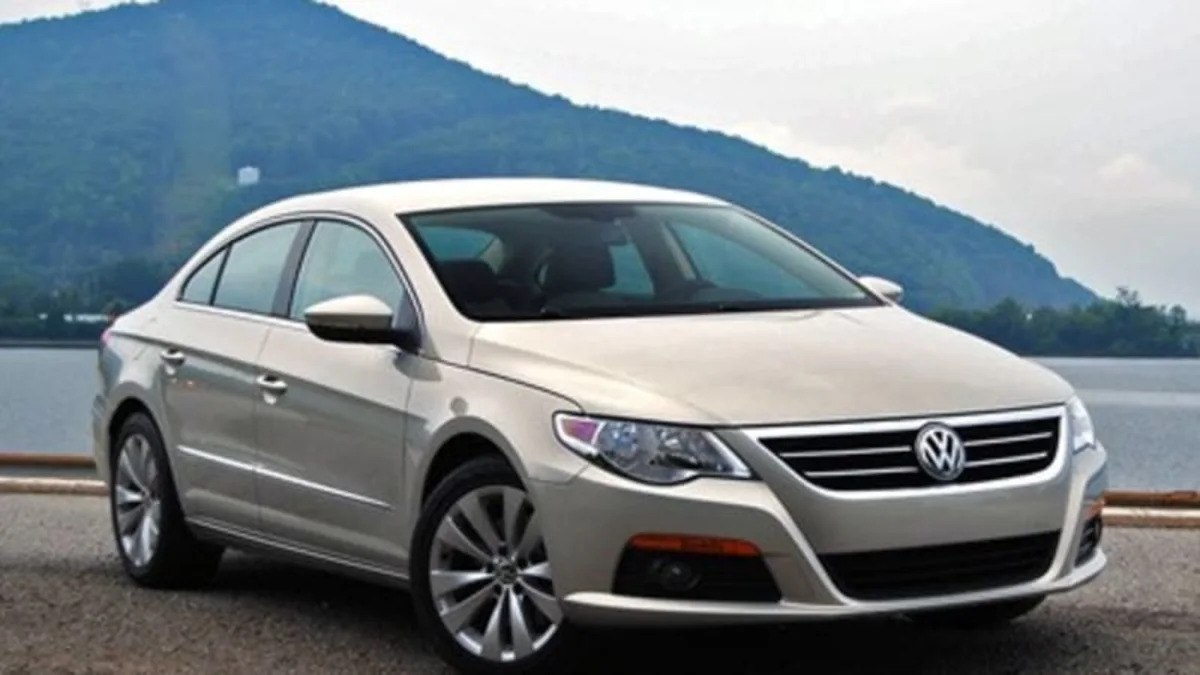
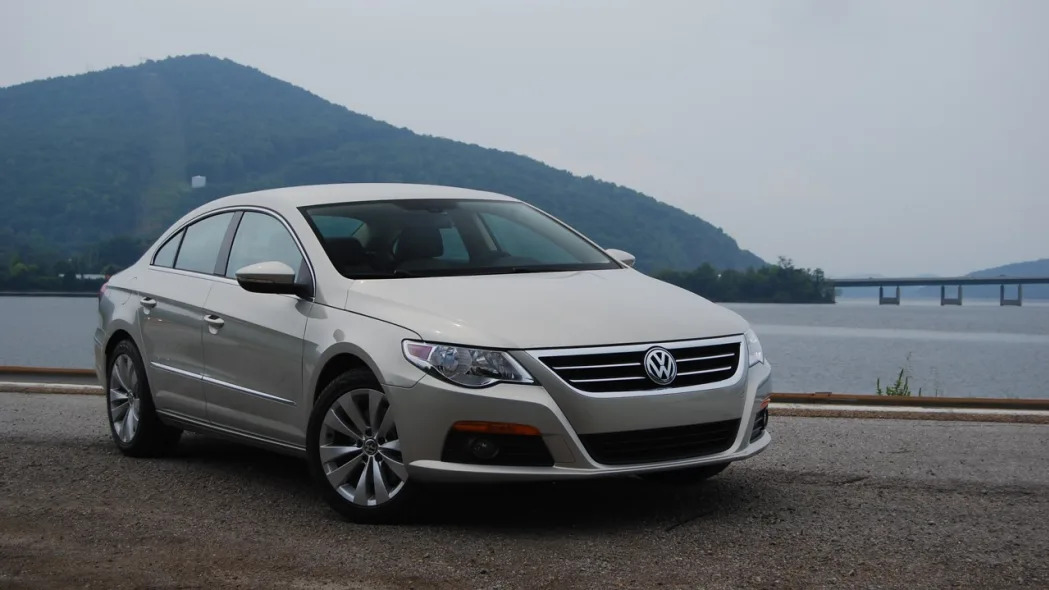
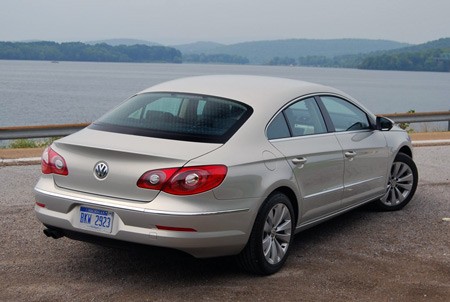
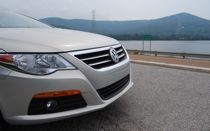
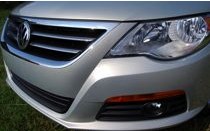

Sign in to post
Please sign in to leave a comment.
Continue